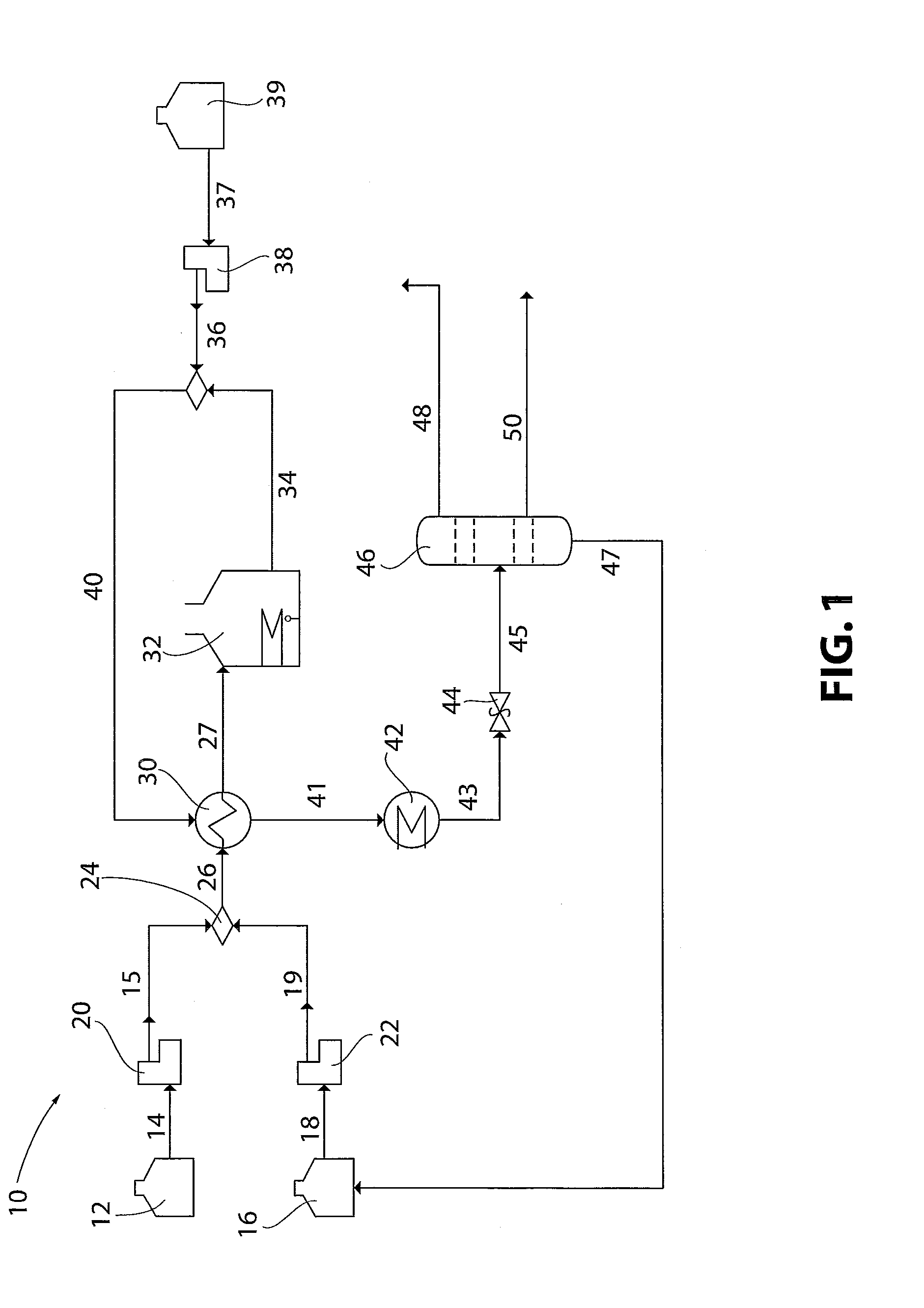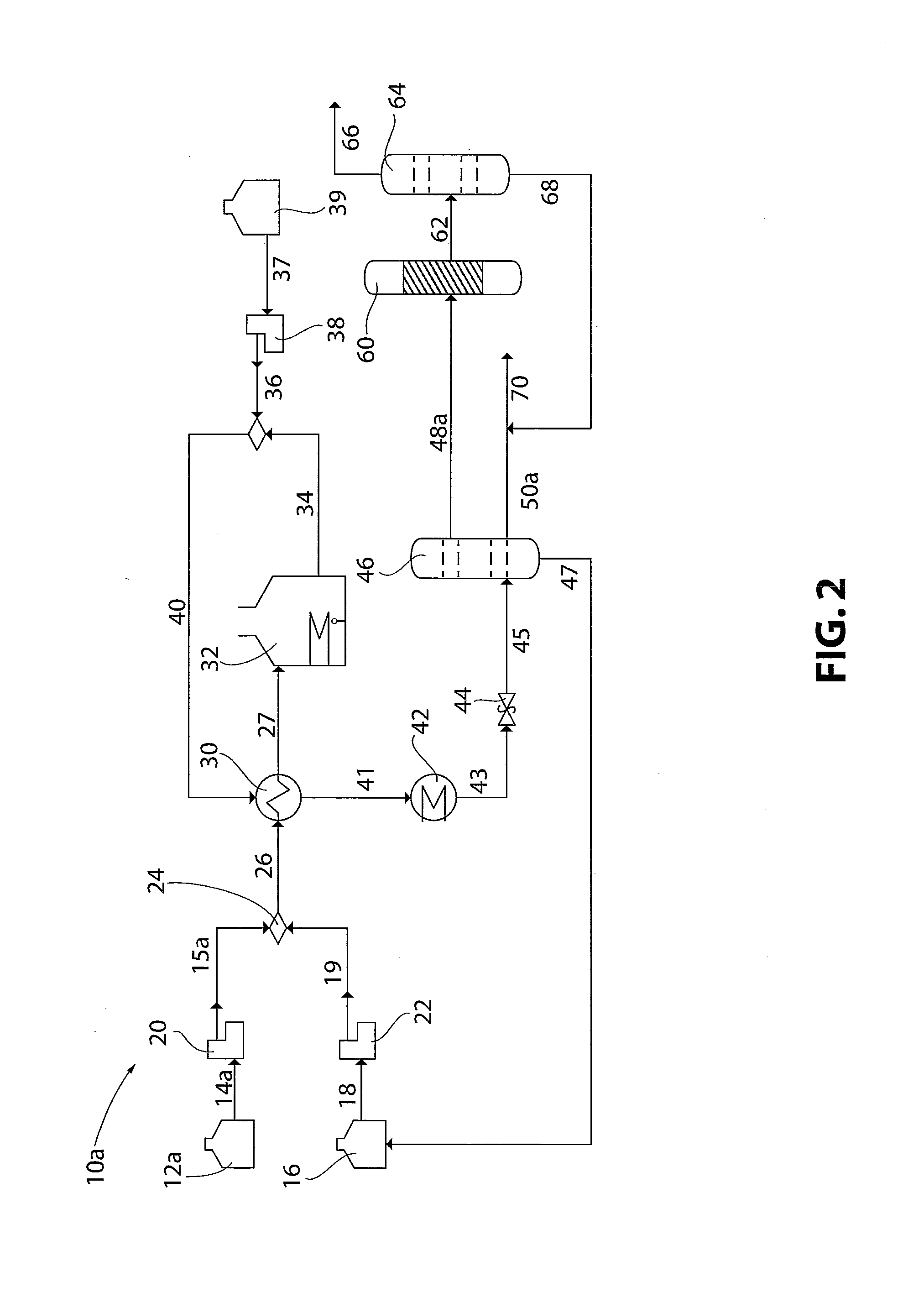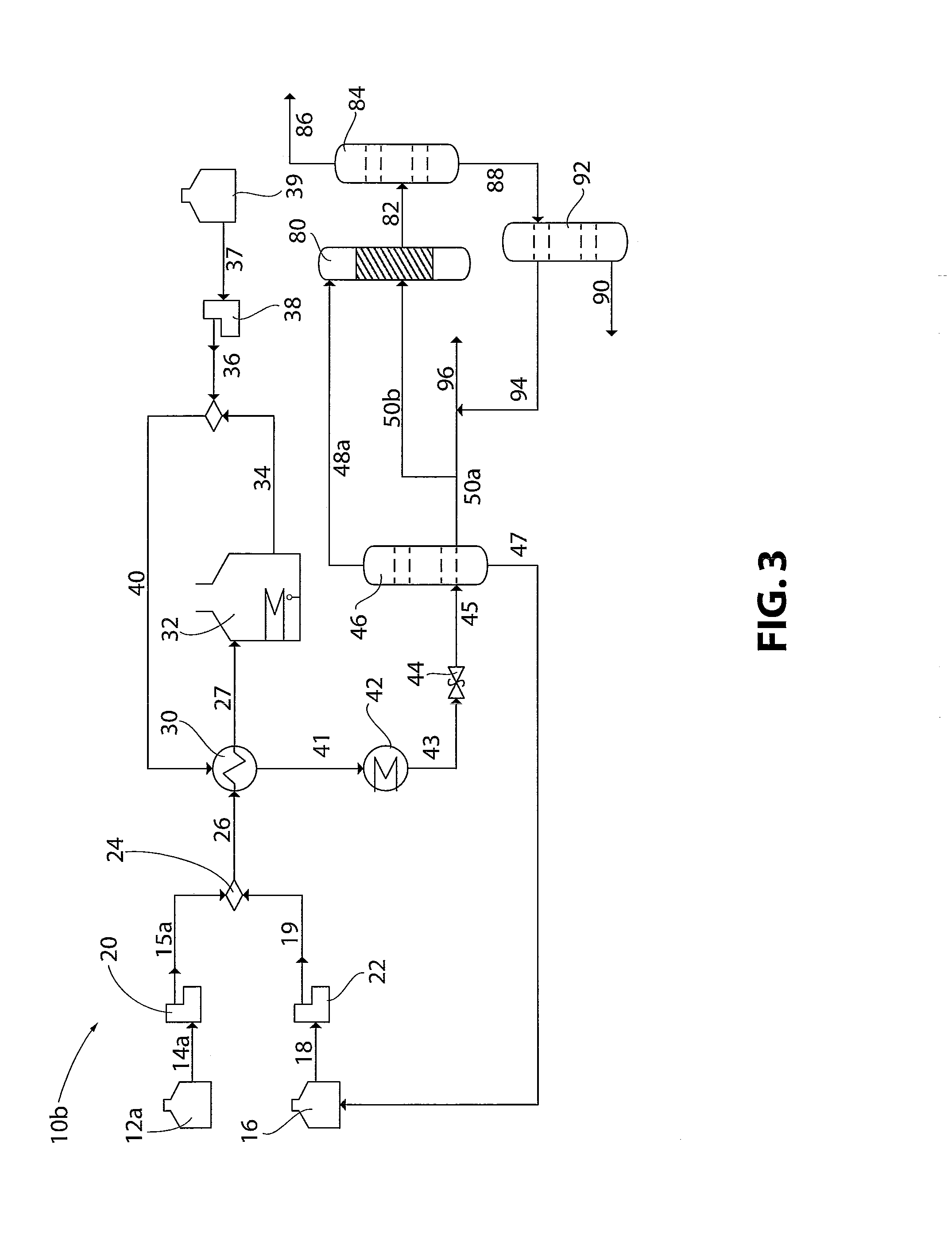High rate reactor system
a reactor system and high-rate technology, applied in the direction of hydrocarbon oil treatment products, thermal non-catalytic cracking, supercritical condition processes, etc., can solve the problems of requiring changes in current refinery operations and equipment, difficulty in handling and transport, and difficulty in refining waxy crudes. , to achieve the effect of reducing asphaltene and metal content, improving properties, and high valu
- Summary
- Abstract
- Description
- Claims
- Application Information
AI Technical Summary
Benefits of technology
Problems solved by technology
Method used
Image
Examples
example 1
Renewable Feedstock
[0063]This example is directed to the conversion of triglyceride-type renewable oils into the precursors for renewable naphtha, jet and diesel fuels using the high-rate hydrothermal reactor. Renewable oils can be derived from plants, algae, or tallow and includes waste vegetable oil. The high-rate hydrothermal reactor process offers the unique benefits, compared to conventional conversion technologies such as hydrotreating, hydrocracking, and hydroisomerization processes, in that fatty acids are cracked and cyclized into alkyl cycloparaffin and alkyl aromatic compounds in addition to lower molecular weight iso- and normal paraffins. The conversion of renewable oil also produces organic acid byproducts that can be reduced to the corresponding paraffins by hydrogenation using conventional nickel-moly hydrotreating catalysts. Hydrotreating and fractionating renewable crude oil results in renewable naphtha, jet, and diesel fuels that exhibit chemical, physical, and co...
example 2
Naphtha Feedstock
[0072]A bench-scale, continuous-flow, high-rate reactor system was fabricated and tested. The configuration of the bench-scale system is the same as FIG. 1. The naphtha feedstock was produced by the catalytic hydrothermolysis of plant oil, which was then hydrotreated and fractionated into naphtha, jet, and bottoms products. The feedstock properties are shown in Table 4. This feedstock contained 8% aromatic compounds, 19% cycloparaffin compounds, and over 68% normal paraffins. The naphtha feedstock was highly saturated and had a bromine number less than 1.0.
TABLE 4Naphtha FeedstockMass Percentage of Naphtha FeedCarbon #PIONATotal30.050.000.000.000.000.0541.820.000.000.000.001.8258.840.560.000.000.009.40614.502.710.000.000.0017.21719.350.790.006.240.0026.35815.940.060.007.223.6026.8297.470.320.003.863.7515.4010 0.480.000.001.630.842.95Total68.424.440.0018.958.19100.0010 0.480.000.001.630.842.95Total68.424.440.0018.958.19100.00
[0073]The feed pumps controlled the overal...
example 3
Fischer-Tropsch (FT) Wax
[0079]This example illustrates that the high-rate hydrothermal process can be used to convert Fischer-Tropsch (FT) wax into distillate products. There is special interest in small (less than 5000 barrels / day) FT systems for converting “stranded gas” or syngas into liquid product. While large commercial FT systems use hydrocracking to convert high-melting-point FT wax into distillate, hydrocracking is not attractive for small FT systems due to complexity and cost.
[0080]Product from FT processes exhibits a broad range of molecular weight from light naphtha to C80+ waxes. Typically, the liquid fraction (smaller than C22) is separated from the wax and often the highest molecular weight waxes (larger than C50) are also separated for other applications. The FT wax used in this example is a distillate product that contains C20 to C55 waxes and is a commercially available product identified as IGI 1339A. An assay of the IGI 1339A wax was approximated using simulated ...
PUM
 Login to View More
Login to View More Abstract
Description
Claims
Application Information
 Login to View More
Login to View More - R&D
- Intellectual Property
- Life Sciences
- Materials
- Tech Scout
- Unparalleled Data Quality
- Higher Quality Content
- 60% Fewer Hallucinations
Browse by: Latest US Patents, China's latest patents, Technical Efficacy Thesaurus, Application Domain, Technology Topic, Popular Technical Reports.
© 2025 PatSnap. All rights reserved.Legal|Privacy policy|Modern Slavery Act Transparency Statement|Sitemap|About US| Contact US: help@patsnap.com



